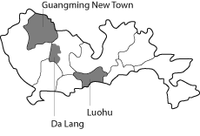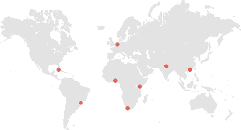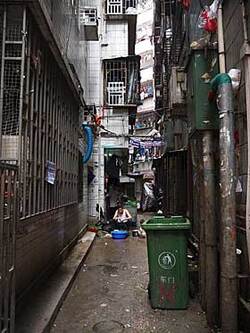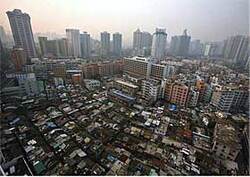Luohu District was the original seed of Shenzhen due to its proximity to the border of Hong Kong. Luohu District is currently facing serious challenges of degeneration and competition from other emerging districts. Recently, the Shenzhen Stock Exchange has been relocated to Futian District and also the development of Shenzhen shifts more towards the eastern part of the city. Students from the Chinese University of Hong Kong, Delft University of Technology and University of Amsterdam re-examine this oldest part of the New Town by doing extensive fieldwork. They will propose alternative models for urban planning and new concepts for economic growth based on densification, complexity and diversity.
Current Conditions
Luohu district was founded in October, 1979. It is located in the center of Shenzhen city, covering an area of 78.36 km². The built environment occupies an area of 34.67 km² and the rest is mainly the Shenzhen water reservoir preservation area and Wutong mountain forest protected area. The forest coverage of the whole district is 45%, and the green ratio of the urbanized area is 64.5%. Luohu district governs 10 sub-district offices, 115 community committees, 83 community workstations and 10 sub-district police stations. It currently has 931.000 long-term residents (in 2012), about half of whom (479.600 people) are registered with Hukou. The population density is 11.881 people per km².
Luohu district was the first district developed in Shenzhen and one of the city’s central urban districts. It had the advantage of enjoying the first economic reform policies and created the record of “Shenzhen speed” (constructing one floor of a building in three days). The nation’s first stock exchange, the first futures market and the first local commercial bank were all born here. A spirit of adventure, reform and innovation has been cultivated in Luohu. After 30 years of development, Luohu became the financial center, commercial center, as well as the biggest gold and jewelry processing base in Shenzhen. The percentage of producer service industries, such as professional financial and business services, in total GDP has risen to 61.1% in 2012. The percentage of high-end service industries in total GDP has risen to 57.1%. As a mature urban district, Luohu has gathered a rich collection of urban elements, including cafes and restaurants, entertainment, tourism and shopping.
Planning goals of the “Twelfth five-year Plan”
Being the original seed of the Special Economic Zone and the epicenter of Shenzhen’s rapid development, the redevelopment of Luohu district requires a critical reposition. Once special, it is already becoming an obsolete relic, having lost its identity due to inter-district and inter-regional competition as the rest of the city and country begin to overtake it.
Based on the analysis of the current conditions and problems of Luohu district, the twelfth five-year plan has outlined seven development strategies for Luohu: 1) applying “Shenzhen quality” as a standard to new developments, 2) constructing an international consumer center as the core strategy, 3) developing a service economy and headquarter bases, 4) improving the social welfare of the citizens, 5) using urban regeneration as an important means, 6) economical land development and environmentally-friendly society, 7) using the power of reform and innovation as strong propellers. By applying these strategies, the Shenzhen government’s goal is to put Luohu district at the frontier of city development again and to accelerate the construction of a pilot zone.
There are five specific goals for the social and economic development of the “twelfth five-year”, which will be debated within New New Towns.
1. Prioritize the construction of an international consumer center:
The aim is to develop the district into a base for the fashion industry and make Shenzhen a “fashion capital” attractive to national and international consumers.
2. Accelerate societal construction:
Using people-oriented development as the core concept to increase government investment in social welfare and public services, such as culture and education, medical service system and facilities, social security system and employment enhancement. The goal is to optimize the population structure of the district, attracting highly skilled and educated people, and forming a digital management system.
3. Implement urban regeneration
Because of the land shortage, urban renewal (rather than expansion) will be used as a tool to promote the second round of development of Luohu district. Main projects include: regenerating Sungang-Qingshuihe sub-district into a base for modern service industries, promoting the “golden triangle” as the core financial and commercial center, developing Shuibei-Yibu as a jewelry and fashion shopping center, and Liantang as a cluster for internet business and harbor service district.
4. Optimize the deployment of resources
The goal is to promote thorough social management reform, to realize the autonomy of communities, to strengthen the sense of belonging and recognition of the citizens, and to create a new image of the government through administrative management reform and by strengthening public services and legislation.
5. Promote low-carbon development
The aim is to establish a low-carbon green development concept, to reduce emissions and pollutions, to improve incentive and restraint mechanisms, and to strengthen environmental protection and preservation.






